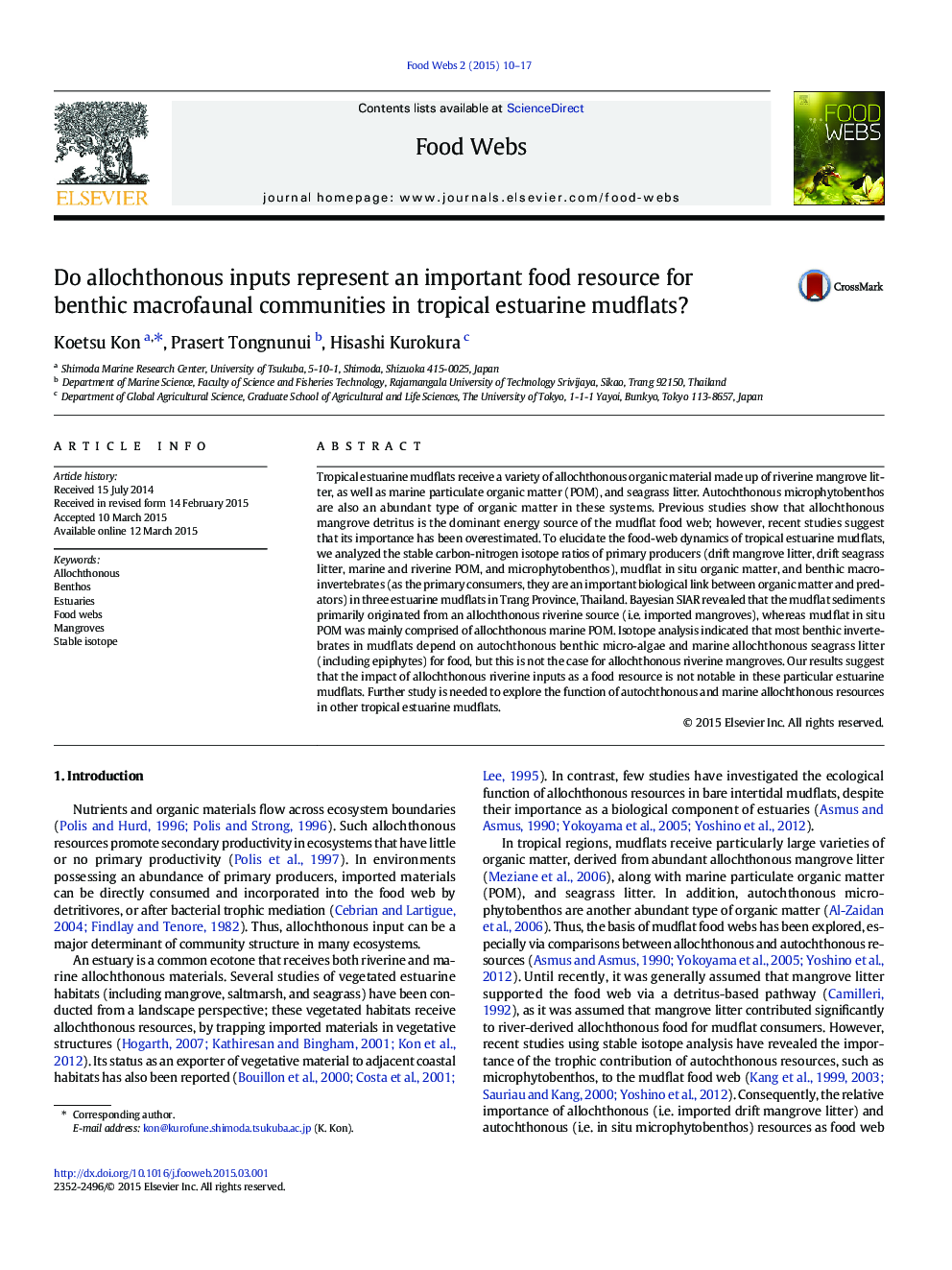| کد مقاله | کد نشریه | سال انتشار | مقاله انگلیسی | نسخه تمام متن |
|---|---|---|---|---|
| 4493285 | 1623643 | 2015 | 8 صفحه PDF | دانلود رایگان |
• We investigated nutritional sources of benthic invertebrates in estuarine mudflats.
• We examined isotopic compositions of producers and consumers.
• Different basal resource compartments were isotopically characterized.
• Invertebrates depend on microphytobenthos and marine allochthonous seagrass litter.
• Impact of riverine allochthonous mangrove litter as a food resource is not notable.
Tropical estuarine mudflats receive a variety of allochthonous organic material made up of riverine mangrove litter, as well as marine particulate organic matter (POM), and seagrass litter. Autochthonous microphytobenthos are also an abundant type of organic matter in these systems. Previous studies show that allochthonous mangrove detritus is the dominant energy source of the mudflat food web; however, recent studies suggest that its importance has been overestimated. To elucidate the food-web dynamics of tropical estuarine mudflats, we analyzed the stable carbon-nitrogen isotope ratios of primary producers (drift mangrove litter, drift seagrass litter, marine and riverine POM, and microphytobenthos), mudflat in situ organic matter, and benthic macro-invertebrates (as the primary consumers, they are an important biological link between organic matter and predators) in three estuarine mudflats in Trang Province, Thailand. Bayesian SIAR revealed that the mudflat sediments primarily originated from an allochthonous riverine source (i.e. imported mangroves), whereas mudflat in situ POM was mainly comprised of allochthonous marine POM. Isotope analysis indicated that most benthic invertebrates in mudflats depend on autochthonous benthic micro-algae and marine allochthonous seagrass litter (including epiphytes) for food, but this is not the case for allochthonous riverine mangroves. Our results suggest that the impact of allochthonous riverine inputs as a food resource is not notable in these particular estuarine mudflats. Further study is needed to explore the function of autochthonous and marine allochthonous resources in other tropical estuarine mudflats.
Figure optionsDownload as PowerPoint slide
Journal: Food Webs - Volume 2, March 2015, Pages 10–17
